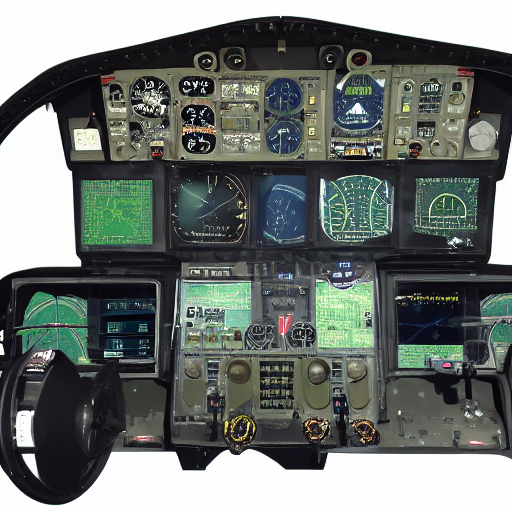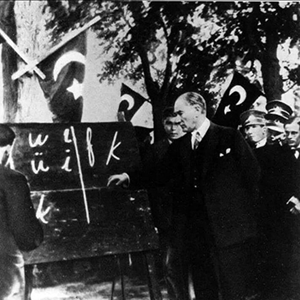Multi-Function Display
Published:
 As a pilot, one of the most important pieces of equipment in the cockpit is the Multi-Function Display (MFD). The MFD is a high-resolution display that can display a variety of information, including maps, weather radar, and flight information. It’s typically located in the center of the instrument panel, between the primary flight display (PFD) and the navigation display (ND). The MFD is usually controlled by a cursor control device (CCD) which is a joystick or trackball that allows the pilot to navigate through the different pages of information on the display.
As a pilot, one of the most important pieces of equipment in the cockpit is the Multi-Function Display (MFD). The MFD is a high-resolution display that can display a variety of information, including maps, weather radar, and flight information. It’s typically located in the center of the instrument panel, between the primary flight display (PFD) and the navigation display (ND). The MFD is usually controlled by a cursor control device (CCD) which is a joystick or trackball that allows the pilot to navigate through the different pages of information on the display.
One of the main functions of the MFD is navigation. The MFD can display a variety of navigation information, including a moving map, which shows the aircraft’s position relative to the surrounding terrain and airspace. The MFD can also display information from the aircraft’s navigation databases, such as waypoints, airways, and airports. This allows the pilot to easily plan a flight, and to quickly see the aircraft’s position and track relative to the intended flight plan.
Another important function of the MFD is weather information. The MFD can display weather radar information, which provides the pilot with an up-to-date picture of the weather conditions along the flight path. This information is crucial for avoiding thunderstorms and other severe weather conditions. Additionally, the MFD can also display weather information from other sources, such as weather forecasts and meteorological reports, which can be used to plan a flight and make in-flight decisions.
The MFD also serves as the primary source of communication information. The MFD can display radio frequencies, and can also be used to control the aircraft’s communication and navigation radios. This allows the pilot to easily monitor and change radio frequencies, and to communicate with air traffic control and other aircraft.
In addition to these primary functions, the MFD can also display other information, such as engine parameters, fuel information, and flight performance data. This allows the pilot to quickly and easily monitor the status of the aircraft systems, which is important for ensuring safe and efficient flight operations. The MFD also provides a wealth of information that can be used to troubleshoot problems, should they arise. For example, the MFD can display information from the aircraft’s engine management system, which can help the pilot identify and diagnose problems with the engines.
Another important feature of the MFD is its ability to display multiple pages of information simultaneously. This allows the pilot to view multiple types of information at the same time, such as the navigation map and weather radar, which can be critical for making quick and accurate decisions during flight.
In conclusion, the Multi-Function Display is an essential piece of equipment in the cockpit, providing pilots with a wealth of information that is critical for safe and efficient flight operations. The MFD’s ability to display navigation, weather, and communication information, as well as other aircraft systems data, allows pilots to easily plan and monitor flights, troubleshoot problems, and make quick and accurate decisions. As a pilot, it’s crucial to have a good understanding of the capabilities and features of the MFD and to use it effectively.

 The year 2023 was full of various experiences for me. I took on the role of an Assistant Professor, and the journey had unexpected events like a major surgery, health issues within my family, starting a website, and picking up new hobbies. This post gives an honest overview of the good and bad moments that shaped my year. The foundation of everything in life is undoubtedly health. Without it, even the biggest achievements and detailed plans can fall apart. Health quietly influences our daily activities, professional goals, and personal relationships.
The year 2023 was full of various experiences for me. I took on the role of an Assistant Professor, and the journey had unexpected events like a major surgery, health issues within my family, starting a website, and picking up new hobbies. This post gives an honest overview of the good and bad moments that shaped my year. The foundation of everything in life is undoubtedly health. Without it, even the biggest achievements and detailed plans can fall apart. Health quietly influences our daily activities, professional goals, and personal relationships.  Ever wondered who the superheroes of the Java world are? Java Champions are like the rock stars of Java programming. They’re not just good; they’re exceptional! These are people who have shown their love for Java in outstanding ways. Java Champions are recognized as elite members of the Java community who have made significant contributions in various ways. Unlike certifications or titles that are earned through formal channels, becoming a Java Champion is an acknowledgment of a person’s ongoing and sustained efforts in the Java ecosystem.
Ever wondered who the superheroes of the Java world are? Java Champions are like the rock stars of Java programming. They’re not just good; they’re exceptional! These are people who have shown their love for Java in outstanding ways. Java Champions are recognized as elite members of the Java community who have made significant contributions in various ways. Unlike certifications or titles that are earned through formal channels, becoming a Java Champion is an acknowledgment of a person’s ongoing and sustained efforts in the Java ecosystem.  On November 24th, we observe Teachers’ Day in Turkey, a day that holds great importance and emphasizes the crucial role of education in our society. Mustafa Kemal Atatürk, a military leader and statesman, understood how education could profoundly shape a nation’s destiny. He believed that the progress and prosperity of a society were closely tied to the quality of its education system. Atatürk firmly believed that a well-educated and enlightened citizenry was the cornerstone for building a modern, democratic, and forward-thinking nation.
On November 24th, we observe Teachers’ Day in Turkey, a day that holds great importance and emphasizes the crucial role of education in our society. Mustafa Kemal Atatürk, a military leader and statesman, understood how education could profoundly shape a nation’s destiny. He believed that the progress and prosperity of a society were closely tied to the quality of its education system. Atatürk firmly believed that a well-educated and enlightened citizenry was the cornerstone for building a modern, democratic, and forward-thinking nation.